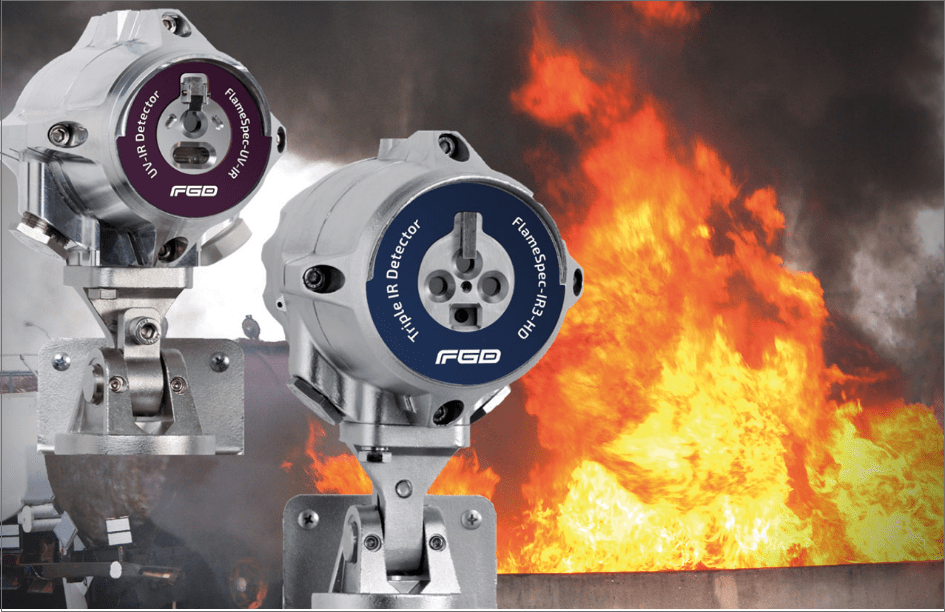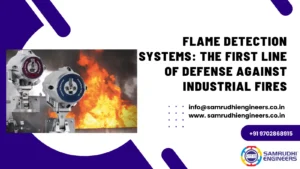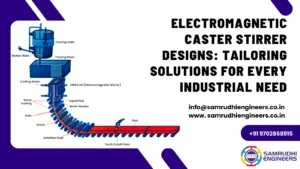Fire safety is a paramount concern across industries, homes, and public spaces, where the rapid identification of a fire can mean the difference between containment and catastrophe. Flame detection systems have emerged as a cornerstone of modern fire safety, offering advanced technology to detect flames at their inception. Among the key players in this field, Samrudhi Engineers has established itself as a reliable provider of cutting-edge flame detection solutions. In this blog, we’ll dive into the workings of flame detection systems, their significance, and how Samrudhi Engineers is shaping the industry with innovative engineering.
What is a Flame Detection System?

A flame detection system is a specialized setup designed to identify the presence of flames using sensors that detect specific electromagnetic radiation emitted during combustion. Unlike traditional smoke or heat detectors, which rely on byproducts of a fire, flame detection systems target the flame itself, making them exceptionally fast and effective in certain scenarios. These systems typically consist of detectors, control units, and integration with response mechanisms like alarms or fire suppression tools.
Flame detection systems operate by analyzing light wavelengths—such as ultraviolet (UV), infrared (IR), or visible light—produced by flames. They are engineered to distinguish flames from other light or heat sources, ensuring accuracy and minimizing false alarms. This technology is particularly valuable in environments where fires can ignite suddenly and spread rapidly, such as industrial plants, oil rigs, or aircraft hangars.
Why Flame Detection Systems Matter
The ability to detect a fire at its earliest stage is critical for safety and damage control. Flame detection systems offer several advantages over conventional methods:
Rapid Response: They detect flames within milliseconds, enabling immediate action.
Precision: Advanced sensors reduce false positives by differentiating flames from sunlight, welding arcs, or machinery heat.
Adaptability: These systems function in diverse conditions, including outdoors, high temperatures, or dusty environments.
Enhanced Safety: Early detection prevents escalation, protecting lives, equipment, and infrastructure.
How Flame Detection Systems Work
Flame detection systems rely on sophisticated technology to identify flames. The core component is the detector, which varies based on the type of radiation it senses. Here’s a breakdown of the main types:
1. Ultraviolet (UV) Flame Detectors
UV detectors pick up the ultraviolet radiation emitted by flames during combustion. They are highly sensitive and ideal for detecting hydrocarbon-based fires, hydrogen flames, or metal fires. However, they can be triggered by non-fire UV sources like lightning, requiring careful calibration.
2. Infrared (IR) Flame Detectors
IR detectors focus on the infrared energy produced by flames, often requiring the characteristic flicker of a fire to confirm detection. They are effective but can be affected by background IR sources like hot machinery or sunlight.
3. UV/IR Flame Detectors
Combining UV and IR sensors, these hybrid systems require both signals to activate an alarm, offering greater reliability and fewer false alarms. They are widely used in industrial and outdoor settings.
4. Multi-Spectrum Infrared (MSIR) Detectors
MSIR detectors analyze multiple IR wavelengths to distinguish flames from other heat sources. They perform well in smoky or obscured environments and are less prone to interference, making them a premium choice for complex applications.
5. Visual Flame Imaging Systems
Using video-based technology like CCD cameras, these systems analyze flame patterns and movement. They provide visual confirmation of a fire, reducing dependence on radiation alone and excelling in challenging conditions.
Applications of Flame Detection Systems
Flame detection systems are deployed across a variety of sectors, reflecting their versatility:
Industrial Plants: Factories handling chemicals, textiles, or flammable gases use these systems to monitor high-risk areas.
Oil and Gas Industry: Refineries, drilling platforms, and pipelines rely on flame detectors to prevent catastrophic hydrocarbon fires.
Aviation: Hangars and maintenance facilities use flame detection to safeguard aircraft from fuel-related incidents.
Power Generation: Boiler rooms and turbine areas employ these systems to ensure safe combustion and detect anomalies.
Residential and Commercial Spaces: Emerging smart flame detection systems offer early warnings for kitchens, garages, or public venues.
Samrudhi Engineers: Leading the Way in Flame Detection Systems
Company Overview
Founded with a mission to deliver high-quality engineering services, Samrudhi Engineers has grown into a multifaceted organization. While their expertise spans motor rewinding, HVAC systems, and electromagnetic stirrer (EMS) coils, their work in flame detection systems showcases their commitment to safety and technological advancement. With a strong emphasis on quality and durability, they cater to a diverse clientele, including sugar plants, power stations, and manufacturing units.
Flame Detection Systems by Samrudhi Engineers
Samrudhi Engineers offers a range of flame detection systems designed to meet the unique needs of their clients. Their offerings stand out for several reasons:
Cutting-Edge Technology: They incorporate UV, IR, or hybrid detectors, ensuring rapid and accurate flame detection across applications.
Tailored Solutions: Working closely with clients, they customize systems to suit specific environments, from indoor factories to outdoor rigs.
Robust Design: Built with ISO-certified components, their systems are engineered for longevity and performance in challenging conditions.
Seamless Integration: Their detectors connect effortlessly with alarms, suppression systems, and control panels, creating a cohesive safety network.
Quality and Innovation: At the heart of Samrudhi Engineers’ success is their dedication to quality. Their team of experienced engineers uses advanced design tools and rigorous testing protocols to ensure every system meets international standards. They also prioritize innovation, exploring new technologies to enhance detection accuracy and system reliability.
Client-Centric Approach: Samrudhi Engineers understands that no two clients are alike. Whether it’s a small business needing a basic system or a large industrial complex requiring a comprehensive setup, they deliver solutions that balance performance and cost. Their collaborative process involves assessing client needs, designing bespoke systems, and providing ongoing support.
Samrudhi Engineers’ Impact on Flame Detection
- Technical Proficiency: Their deep understanding of fire safety engineering ensures systems are both effective and efficient.
- End-to-End Services: From design and installation to maintenance, they offer a full spectrum of support.
- Affordability: By sourcing durable, high-quality materials, they provide competitive pricing without sacrificing quality.
Conclusion
Flame detection systems represent a vital advancement in fire safety, offering speed, accuracy, and reliability where traditional methods may falter. From industrial giants to everyday homes, these systems protect lives and assets by catching fires at their earliest moments. Samrudhi Engineers, with its innovative approach and unwavering commitment to quality, plays a pivotal role in this space. Their tailored, high-performance flame detection systems meet the demands of a diverse range of clients, ensuring safety in even the most challenging environments.
As technology continues to evolve, Samrudhi Engineers stands ready to lead the charge, blending engineering excellence with forward-thinking solutions. Whether you’re safeguarding a refinery or fortifying your home, their flame detection systems offer peace of mind and a promise of protection in an unpredictable world.







